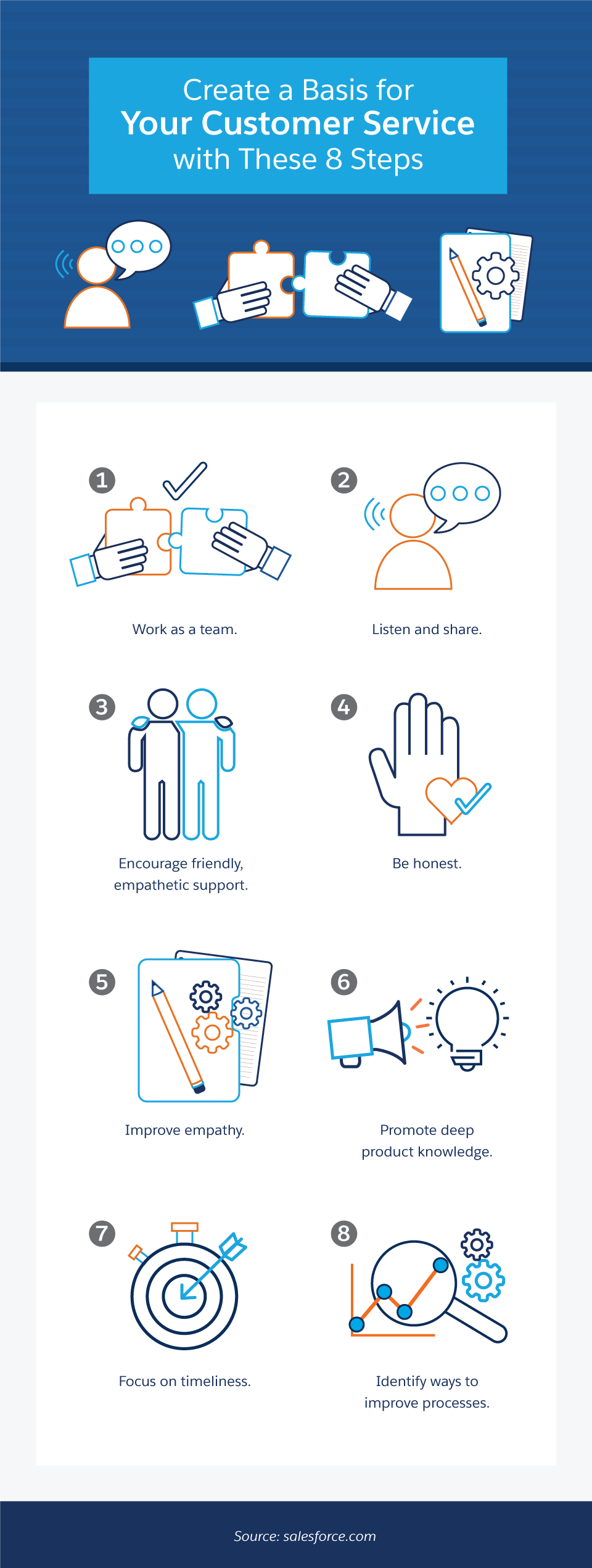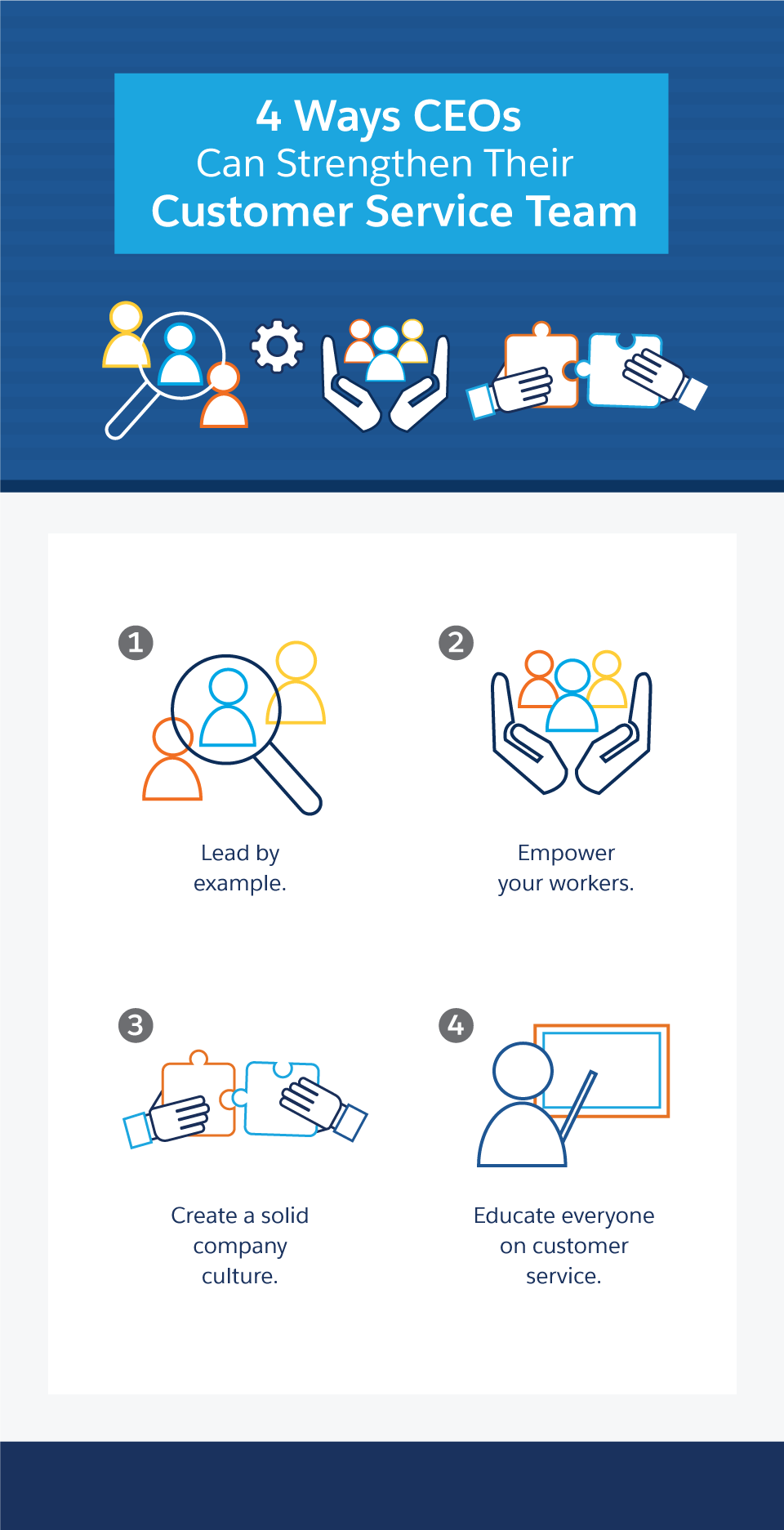Stop me if you’ve heard this one before: “It starts at the top.” It's a cliché because it’s true. Company culture, values, mindset, you name it — in a traditional, hierarchical organization, you can tell what a business prioritizes based on the actions of its CEO. And this includes the importance a CEO places on customer service. As the head of your company, if you phone it in, you unconsciously set the stage for your employees to do so too.
It’s no surprise that founders, CEOs, and other leaders at highly successful companies understand that their relationships with customers are paramount. Jeff Bezos, founder and CEO of Amazon, likened the customer-company relationship to that of hosts and guests. He said, “We see our customers as invited guests to a party, and we are the hosts. It’s our job every day to make every important aspect of the customer experience a little bit better.” And this relationship goes beyond you and your customer service team. The founder of Virgin Group, Richard Branson, said, “Setting customer expectations at a level that is aligned with consistently deliverable levels of customer service requires that your whole staff, from product development to marketing, works in harmony with your brand image.”
As a leader, your attitude and actions directly affect the customer service experience at your company and how your workers approach it.

Customer Service and Why It’s Essential
Let’s dive a little deeper into customer service and why it empowers your organization as a whole.
First, what exactly is customer service? Plainly, it’s the support you offer your customers when they use — or perhaps, contemplate purchasing — your products or services. Good support helps customers have an easy, enjoyable experience, and often breeds loyalty. These loyal customers tend to buy more from you and tell their friends and family about your company. From there, this positive word of mouth can spur new business for you. Customer service should feel personal and empower your buying community.
Today, companies can offer support 24/7 and in a variety of channels. The four As — assess, analyze, act, and acknowledge — can help you and your team maximize successful customer interactions.
Assess: With data from a customer relationship management (CRM) platform, companies have access to information such as account histories and previous customer communications. This allows you to access a larger scope of the customer and, with that comprehensive view, personalize each interaction.
Analyze: While listening to or reading (via mail, chat bot, social media, or other channels) the customer interaction, you can address the issue using potential solutions within your business technology and through other organizational systems in place. Incoming service issues can be evaluated automatically based on priority and funneled across the team.
Act: All the processes in the world don’t matter if there’s no action. Unfortunately, not all problems have an immediate fix, and sometimes the way in which an issue came to light might not be the best channel to handle it. For example, an email stating a problem may be easier, and more meaningful, to reply to and resolve over the phone. For frequently asked questions and other self-service asks, it may be best to dispatch these through a chat bot.
Acknowledge: The end goal is to satisfy the customer. Aside from answering questions and concerns, offering an apology for the inconvenience can make a big difference, too. People respect an organization that goes above and beyond for them.
You want your dedicated customer service staff to own this part of the business. But before they can do that, you need to support them.

How Bosses Can Positively Influence Customer Service Departments
Whether you’re a manager or CEO, your actions wield a lot of influence. Here are four ways higher-ups can improve and validate their customer service department’s efforts.
1. Lead by Example
T-Mobile CEO John Legere made headlines last summer when he injected himself into a trending story on Twitter. A woman started documenting a budding romance between two passengers who were sharing her flight. The story picked up steam, and more people began engaging with the woman live-tweeting it. Then, she announced she’d have to pause her storytelling to buy more Wi-Fi. That’s when Legere, who was one of the many on Twitter following along, publicly reached out and offered to credit her for the Wi-Fi if she was a T-Mobile customer.
The stunt added to the conversation in a meaningful way and won praise for Legere and T-Mobile. By offering to compensate a potential T-Mobile service user when she was in need, he showed his human side in an amusing way that didn’t detract from the original story. Lead by example to demonstrate how your team can connect with your community, too.
2. Empower Your Workers
In the previous example, a CEO is the one greenlighting the giveaway. He can certainly get away with it, but what about other members of the team?
You want to empower your team to be able to delight customers. For instance, hand them the ability to right a wrong by giving a disgruntled user a free add-on or full refund if it helps create customer loyalty. On the other hand, if there’s an entertaining social media exchange, you can give your rep the opportunity to make a customer’s day by offering them a free upgrade or giving them a free month of service. Maybe they randomly offer 10 promo codes to existing customers one day, just because.
This engagement shows you’re connected to your community. Plus, it’s fun! And fun is good for business.
Of course, you want well-thought-out guidelines in place before anyone starts handing out discounts and promotions. If you don’t want to give the entire department this kind of autonomy, authorize a manager or a couple of team leads to make the call. Above all, encourage employees to look out for new and surprising ways to make a customer’s day.

3. Create a Solid Company Culture
CEOs sometimes place the responsibility of developing and maintaining company culture with human resources. However, implementing the company’s values should come from the top. After all, your behaviour sets the tone for what’s acceptable — not to mention expected — in your company.
For example, customer service jobs are often popular among recent college graduates. And while people champion the notion of starting at the bottom and working your way to the top, seasoned workers sometimes try to assert their authority. This can create distrust and disloyalty among your workers.
When upper management values sincerity and respect and wants employees to spread these values to customers, then they need to exhibit these characteristics in the workplace, too. It doesn’t matter if someone is fresh out of college or an industry veteran, or what their job title is: Everyone has different skills and perspectives to bring to the table. If you evangelize treating a customer a certain way, such as with respect, ensure your employees are treated the same way, too. Make sure your culture breeds the behaviours you want to promote.
4. Educate Everyone on Customer Service
One way to encourage your company to prioritize customer service is by getting everyone involved. Some company training programs make everyone, regardless of their role, spend time working in customer service. It makes sense, and can be super informative:
How are employees expected to talk to customers?
How should they handle a variety of situations?
What are customers’ major pain points?
To be successfully customer-centric, your support staff has to have a true interest in the customer’s experience. But if all your employees adopt this mindset, it benefits the company as a whole. As CEO, picture the optics of you carving out time to respond to customer questions or inquiries: You establish its importance at the company. Plus, you’ll likely pleasantly surprise some customers on the receiving end.
Great relationships are built on trust and respect. Customer service is a relationship between your company and your buyer. Make it an extraordinary one, and it will exceed both of your expectations.


